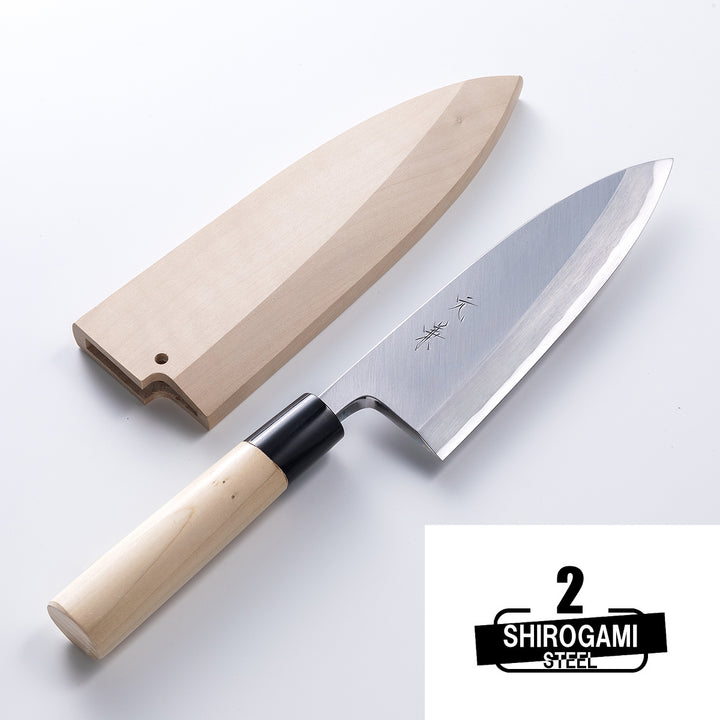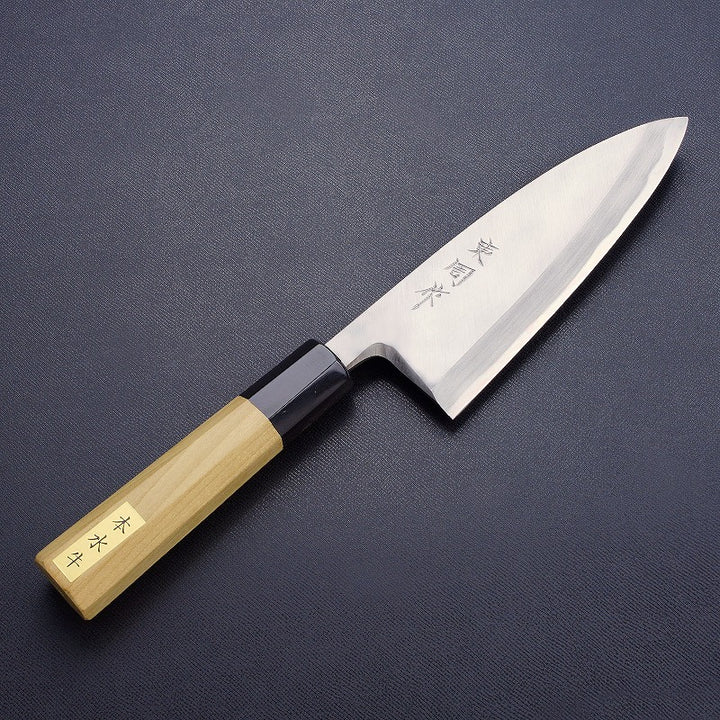Deba Knife

The perfect knife for cutting fish and smashing bone-in fish, meat, and fowl.
If you often use it for smashing purposes, a double-edged blade is recommended.
How to find
Japanese Deba Knife
Best-Selling Japanese Deba Knives
  "YOSHIKAZU TANAKA" 
|
  Deba (Butcher Knife) 
|
  "MOTOKANE" Kurouchi 
|
Deba Knife Product List
| Small Deba Knife | Deba Knife | Mioroshi Knife |
 A small-sized deba knife. Ideal for fish filleting and other tasks. |
 Ideal for filleting fish, cutting through fish with bones, and chopping meat and poultry. |
 A specialized knife, thinner and narrower than a deba knife, designed specifically for filleting fish. |
| Funayuki Knife | Western Deba Knife | |
 This knife was originally created for fishermen to easily prepare meals on their boats. It is a thinner version of the deba knife, making it convenient for preparing small fish. |
 A deba knife with a composite plywood handle and double-edged blade. |
| Small Deba Knife | Deba Knife |
 A small-sized deba knife. Ideal for fish filleting and other tasks. |
 Ideal for filleting fish, cutting through fish with bones, and chopping meat and poultry. |
| Mioroshi Knife | Funayuki Knife |
 A specialized knife, thinner and narrower than a deba knife, designed specifically for filleting fish. |
 This knife was originally created for fishermen to easily prepare meals on their boats. It is a thinner version of the deba knife, making it convenient for preparing small fish. |
| Western Deba Knife | |
 A deba knife with a composite plywood handle and double-edged blade. |
How to choose the size
of your Deba knife

In the case of a deba knife, the blade length is the size of the knife.
Deba knives come in blade lengths ranging from 90 to 300 mm, in 15 mm increments.
The size of your deba knife is best determined by the size of the fish. It is best to choose one that is the same length as the fish you want to fillet.
for example
・120mm for small fish such as horse mackerel
・165mm for medium-sized fish such as sea bream
・240mm for large fish such as yellowtail
| Blade length | Grind Fish | |||
| 105~135mm | Horse mackerel, Sardine | |||
| 150~165mm | Mackerel, Sea bream | |||
| 180~210mm | Yellowtail, Amberjack | |||
*It is easier to cook fish if you think about its size in terms of its length rather than its width.

By making the blade the same length as the fish, when filleting the fish, the knife will hit the backbone when inserted at a 45-degree angle, allowing you to cut neatly along the bone.
When filleting a fish, the knife is tilted at a 45 degree angle to the fish. Therefore, if the blade length is too short compared to the length of the fish, the fish will require two or three cuts to be cut, which can easily result in the flesh becoming mushy. However, by choosing a blade length the same as the fish, the knife can be tilted at an angle, but only one cut will be needed to cut through to the backbone, allowing the fish to be neatly filleted.
Recommended blade size for beginners
If you are purchasing a home deba knife for the first time and are not sure what size fish you will be cutting, we recommend the 150mm or 165mm knife, which can be used to cut a variety of fish.
















